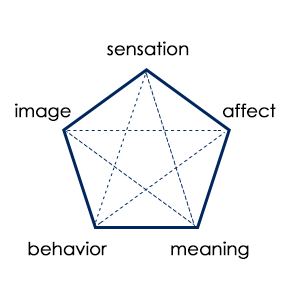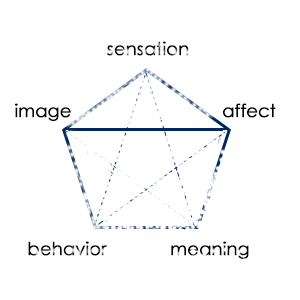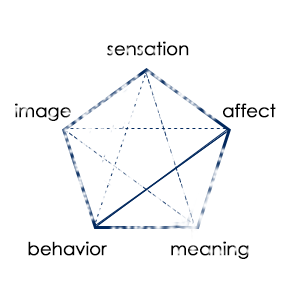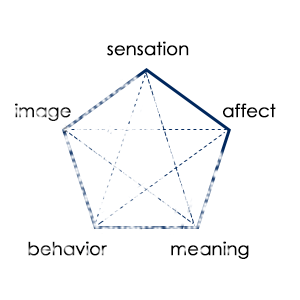Why can't we think our way out of trauma?
In recent decades, psychotherapy has often prioritized cognition and behavior in treatment. However, recent discoveries in neuroscience cast doubt on the completeness of a purely cognitive-behavioral model, especially when addressing the impact of trauma.
Trauma is far-reaching and systemic. It affects our entire being and must be approached from a holistic perspective. It is crucial that any treatment considers our entire being—our whole body-mind—not just our thoughts and behaviors.
Doctors and researchers specializing in trauma, such as Dr. Bessel van der Kolk, Dr. Bruce Perry, Dr. Peter Levine, and Dr. Pat Ogden, agree that trauma affects much more than thoughts and actions.

SIBAM model and how it helps understand trauma?
Dr. Peter Levine is one of those who has made a significant contribution to the understanding of trauma, having studied it for over 50 years. One of the most useful models for understanding trauma comes from his psychotherapy technique Somatic Experiencing®.

In his somatic model, Levine presents five different elements (channels) that are essential for a holistic experience: Sensation, Image, Behavior, Affect, and Meaning (SIBAM).
- Sensation: This includes all information coming from the body – muscle tension, spatial positioning, and organ sensations.
- Images: Refers to our sensory impressions; vision, taste, smell, sound, and touch.
- Behavior: Observable behavior – gestures, facial expressions, and postures. It also includes observable autonomic changes (e.g., increased heart rate observed through the pulsation of neck arteries) and visceral changes (e.g., rumbling in the stomach indicating changes in digestive organs).
- Affect: Emotions and their experience in the body.
- Meaning: Language is the primary tool for expressing meaning. The words we use encompass our entire experience, which is formed through the first four components of this model.
Under ideal conditions, all these elements of consciousness flow freely and connect with each other. This is illustrated by the interconnectedness of each point in the diagram. All points are crucial in creating a cohesive experience. The absence or dominance of any point indicates an inability to organize experiences coherently. Furthermore, over- or under-linking any point can create psychological pathology.
When people try to recount their traumatic memories, they often remember only fragments of the experience – images of the surroundings, sounds, bodily sensations. It’s like a broken puzzle that hasn’t found its way back to wholeness.

For example, someone experiencing hallucinations can be understood as someone overwhelmed by overly dominant images that are disconnected from meaning (the image and affect channels dominate, while the meaning, behavior, and sensation points are underdeveloped).

A person who feels deep anxiety and is then compelled to act in certain ways (without understanding why) may have obsessive-compulsive disorder. This can be understood as the dominance of the behavior and affect points and the underdevelopment of the meaning point.

During a panic attack, two channels (sensation and affect) dominate, leaving the others excluded.
This model confirms something that has always been known: trauma fragments the coherence of experience. Sensation becomes separated from images, affect from meaning, and behavior becomes isolated.
Thus, by placing primary emphasis only on the cognition and behavior points, three very important aspects of a coherent experience are neglected: sensations, images, and affect. This omits a crucial part of the whole.
How to Heal from Trauma?
As we see, trauma can affect five different elements of consciousness, and thus, it is not always possible to heal from trauma solely through talk or behavioral therapy. The importance of the body—and the experience felt within it—has begun to rise, highlighting the significance of emotion- and body-oriented therapies. A holistic approach that includes the body is referred to as somatic psychology, which provides essential insights into the impact of trauma on the body.
Somatic psychology is a way to address a person as a whole, accepting every emotion, feeling, image, experience, and sensation.
On the Rikardia platform, you will find various somatic therapies and practices that help in healing from trauma.
